Things to do in Poland
Every country has its outstanding and special attractions. Goway has selected its Top 19 Things to Do in Poland (not in any particular order) for you to enjoy on your visit to this destination.
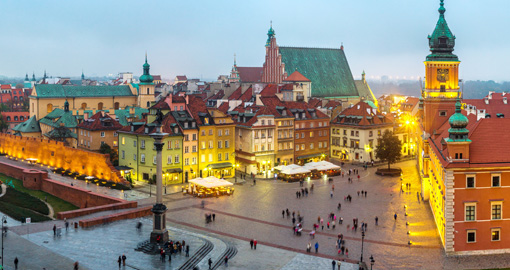
The Old and New Towns of Warsaw
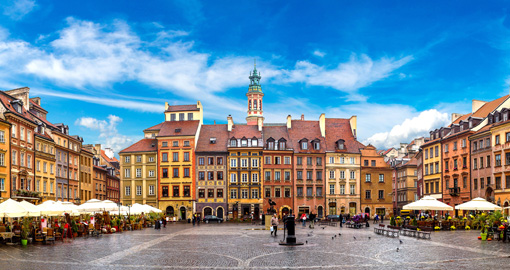
Warsaw's charming Old Town is a UNESCO World Heritage site. The original structures have been reconstructed and restored to their former glory as the majority of the Old Town was destroyed during the Second World War. On a Poland vacation, you feel you have stepped back several centuries, the oldest part having been constructed in the 13th Century. It is full of medieval buildings and residences, squares, monuments, churches, galleries, museums, cafés and restaurants. At the back of the Old Town is the Barbican built in 1548, a fortress with medieval defensive walls, most of which are the original structure. Standing on the top of the walls, there are outstanding views of both the River Vistula below and the city. The New Town is a continuation of the same trip back in time. This neighbourhood dates back to the 15th Century and has its own Market Square It also has six historic churches and several palaces built by noble families.
Royal Castle, Warsaw
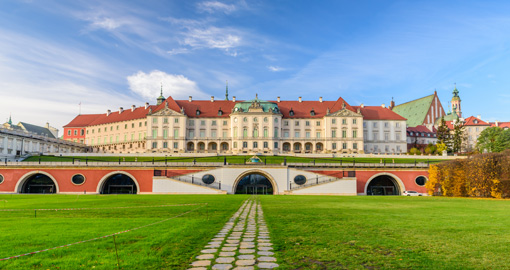
Built-in the 15th Century, the Royal Castle has exhibits of works of art and period furniture that can be viewed on a Poland tour together with its halls and salons. These include the Great Apartment and d the magnificent Great Assembly Hall, restored in the 18th Century with its gilded stucco and golden columns. There is an enormous ceiling painting called “The Disentanglement of Chaos”. The National Hall has six huge canvases depicting scenes from Polish history. Other rooms include the Marble Room with 22 portraits of Polish Kings and the King’s Apartment with 23 Italian paintings.
Royal Route and New World Street (Nowy Swiat), Warsaw
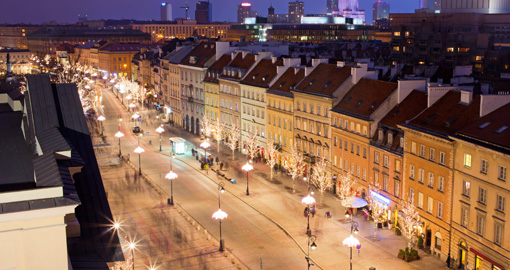
Between the Old Town and the city centre is the Royal Route which eventually turns into New World Street. You pass by small boutique shops and cafes. Just off New World Street are Warsaw University with its attractive campus and charming academic buildings. Close by is the Presidential Palace, an imposing building, once the private property of several aristocratic families.
Frederick Chopin Museum, Warsaw
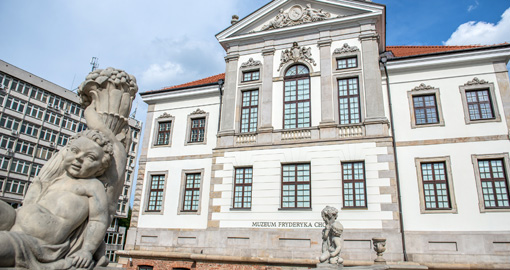
This museum was opened in 2010 to commemorate the 200th anniversary of Poland’s greatest composer. Among the 5,000 exhibits are a lock of his hair, his school exercise books, a gold watch and his passport. There are also audio-visuals, music games and touch screen options to learn about his life and works. You can, on Poland vacations, attend a recital given by a music student of Chopin’s compositions at the nearby Chopin Salon on New World Street which takes place daily at 6 pm.
Copernicus Science Museum, Warsaw
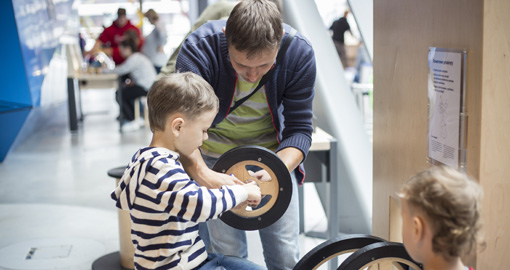
The Copernicus Science Centre is one of the major attractions in Warsaw. It has been declared the best science centre in Europe and is for both adults and children alike. The hands-on exhibits range from not only science to everyday life on our planet. The imagination that has gone into this museum is amazing. There is a genuine flying carpet, you can pilot a spaceship and you can take a picture of your own eye and then try to recognize it among the others photographed that day.
The Palace of Culture and Science, Warsaw
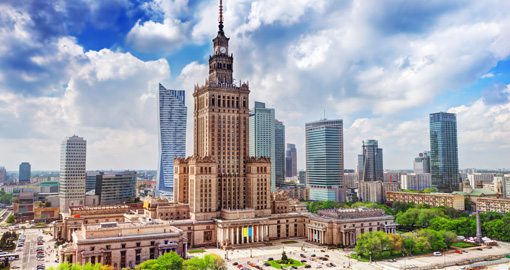
This Soviet-style building was built in the early 1950s and is the tallest building in Poland. It is home to a large congress hall, theatres, a multi-screen cinema and museums. There is also an observation terrace on the 30th floor which provides excellent panoramic views of Warsaw. It has been nicknamed Stalin's Syringe, the Elephant in Lacy Underwear and the Russian Wedding Cake.
Lazienki Park, Warsaw
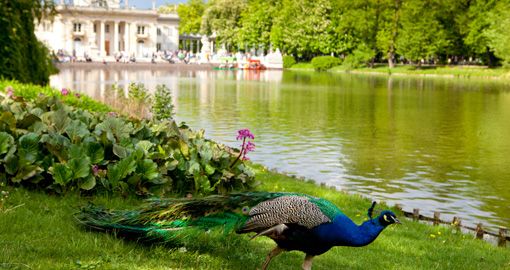
Not too far from the centre of the city on a Poland vacation is a very beautiful large park which was designed as a summer residence for Polish royalty. Now it is a landscaped park which incorporates a summer palace, an amphitheatre, an Orangery and several pavillions. Other attractions in the park include the Lazienki Krowlewski Museum which is an art gallery, an interesting futuristic monument of Chopin, and the Myslewicki Palace, once the official residence of the king’s nephew in which you will find murals, art and furniture and the White House, a gorgeous summer house built in 1774, all interesting architecturally.
Wilanov Palace, Warsaw
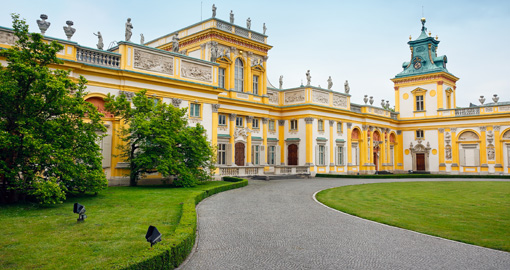
This is Poland’s answer to France’s Palace of Versailles. Located 10 kilometres/6 miles south of the city, it is a wonderful baroque-style late 17th Century palace and one of Poland’s treasures. It started off as a royal residence and subsequently has also been the home of Polish nobility. The Royal Apartments contain suits of armour, Etruscan vases, magnificent frescoes and an exceedingly rare 18th Century glass grandfather clock. The Wilanov Palace Museum contains some old royal coaches. The palace park hosts cultural events and concerts with summer Royal Concerts in the Rose Garden. There is also a Poster Museum.
The Warsaw Uprising Museum
A visit here is a moving experience and is a tribute to the Warsaw residents who fought and died in their effort to free the city from the Nazi army in 1944. The exhibits depict the fighting and everyday life of these people. There are 800 exhibit items and 1500 photographs, films and sound recordings. The stories of eyewitnesses of the 1944 events are heard on audio recordings and the movie theatre shows films about the uprising on a panoramic screen. The exhibits, spread over several floors, are dedicated to each district of Warsaw.
Wawel Castle, Krakow
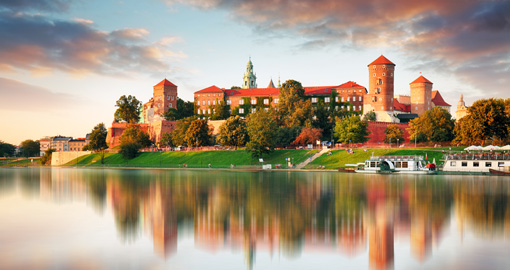
This castle is one of the largest in Poland and represents nearly all European architectural styles of medieval, renaissance and baroque periods. It is located high up on Wawel Hill overlooking the city centre. In 1978 it was declared a UNESCO World Heritage Site as part of the Historic Centre of Krakow. For centuries, it was the residence of the Polish kings and is now one of the country’s premier art museums. Established in 1930, the museum houses an important collection of Italian Renaissance paintings, prints, sculpture, textiles, tapestry, goldsmiths’ works, armour, ceramics, Meissen porcelain and period furniture.
Wawel Cathedral, Krakow
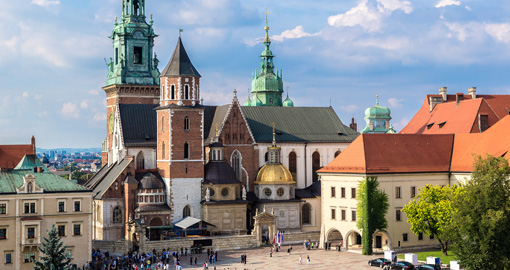
This church which is again on Wawel Hill was consecrated in 1364. The original was founded in the 11th Century. Highlights include the Holy Cross Chapel, Sigismund Chapel, Sigismund Bell, and the Crypt of St Leonard and Royal Crypts. The present-day cathedral is basically a Gothic structure but the chapels which were built around it later are in different styles. At the entrance, hanging on a chain are huge prehistoric animal bones believed to have magical powers. As long as they are here, the cathedral will remain. The bones were excavated on the grounds at the beginning of the 20th Century. The interior is a jumble of sarcophagi, tombstones and altarpieces. The Sigismund Chapel has been called “the most beautiful chapel north of the Alps”. The cathedral tower has 70 steps which lead to the Sigismund Bell, cast in 1520. There are wonderful views from here.
The Main Square, Krakow
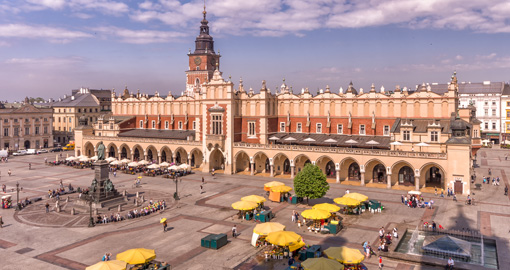
The beautiful and outstanding main square of the Old Town of Krakow dates back to the 13th Century and is one of the largest medieval town squares in Europe to be marveled at on Poland tours. It is surrounded by historic townhouses and churches. Huge medieval cellars of the buildings are used as pubs and restaurants. The square itself is lined with many restaurants and cafes Right in the middle is the Cloth Hall, originally designed in the 14th Century. The main floor is used souvenir shops and cafes; upstairs is the Gallery of the National Museum. Another landmark is St. Mary's Basilica a Gothic church built in the 14th Century where you can listen to a bugle call which is played every hour from the highest tower of the church.
Kazimierz, Krakow
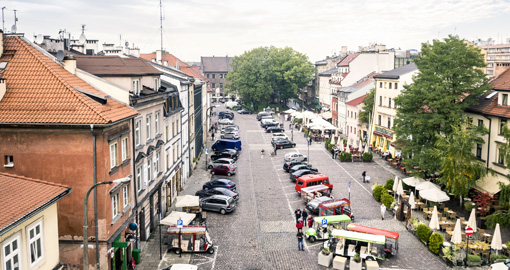
Kazimierz was the centre of Jewish life in Krakow for over 500 years before it was destroyed during World War II. It has recovered and is today Krakow’s most lively district, a bustling, bohemian neighbourhood jammed with historical sites, cafes and art galleries. No other place in Europe conveys a sense of pre-war Jewish culture than Kazimierz. Each summer, the Jewish Culture Festival takes place in the streets and cafes. There are dozens of bars and cafes in Kazimierz to while away time. It is the city’s best neighbourhood for cafe culture and nightlife.
Schindler’s Factory, Krakow
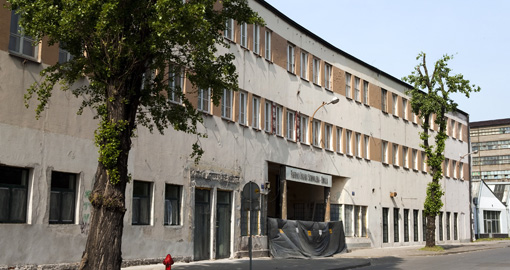
In 2010, the Oskar Schindler Enamelled Goods Factory reopened to the public as a museum. The story of Oskar Schindler and his Jewish employees was the subject of Steven Spielberg's film Schindler’s List in Krakow. Krakow’s wartime inhabitants guide visitors through the exhibit which covers everyday life under the Nazi occupation. It contains exhibits from the city’s underground resistance using archival documents, photos, radio and film recordings, period artifacts and multimedia installations. You can see Schindler's office with his desk and a huge map he used to demonstrate Nazi conquests in Europe. Schindler's Factory is one of the most fascinating museums in the entire country.
Auschwitz- Birkenau, near Krakow
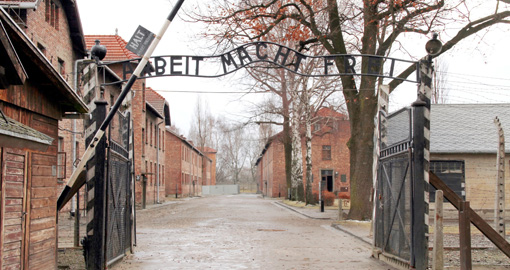
About one hour by road from Krakow is the concentration camps where more than a million Jews as well as many Poles and Roma, were murdered here by the Nazis during WWII. Both Auschwitz and the much larger outlying camp at Birkenau have been preserved and are open for visitors. It is essential to visit both to appreciate the extent and horror of the place. The museum’s visitor centre is at the entrance to the Auschwitz site. Photography and filming are permitted throughout the camp without the use of a flash or stands. Auschwitz was only partially destroyed and many of the original buildings stand to this day as a bleak testament to the camp’s history. Some 13 of the 30 surviving prison blocks now house museum exhibitions. From April to October, it is compulsory to join a tour if you arrive between 10 am and 3 pm.
Poznan
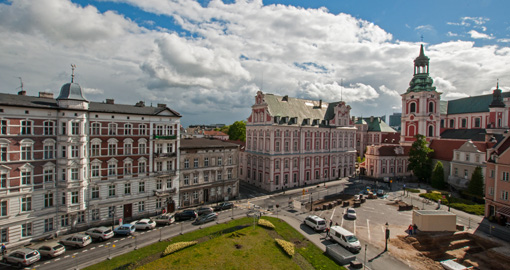
Poznan is a historic city and was Poland’s first capital and the birthplace of the country. Today, it is a vibrant city with lots to see and do on a Poland vacation. The old town square is one of the finest in Europe. Medieval in style, it has been rebuilt after being destroyed in WWll. Cafés and bars line the square and it is a great spot to have a drink and watch the world go by. The Town Hall is the highlight of the square. It is said to be the most beautiful non-church renaissance building in northern Europe. It houses the Historical Museum of Poznan with its exhibits about the history of the city from the 10th Century to the present day. Cathedral Island (Ostrow Tumski) is home to St. Peter’s and Paul’s Cathedral, the first one in Poland. Damaged in 1945, it took 11 years to rebuild. The golden Chapel houses the remains of the first two Polish rulers. There are many museums in Poznan including the Poznan Uprising Museum.
Gdansk
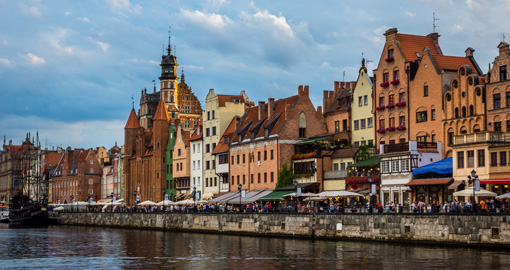
Gdansk is one of Poland's oldest cities with a long history. It was the location where the fall of Communism in Central Europe began and where the movement started as a symbol of resistance against the People's Republic. You can wander the narrow, cobblestone streets of the Main Town lined with large red-brick churches and elegant buildings plus cafes, shops and museums. The city has a unique feel that is different from other cities in Poland. The architecture is influenced by the wealthy merchants who shaped the city’s past. The National Museum has a collection of paintings and other artifacts. The life of Gdansk citizens is displayed at exhibitions in the Gdansk History Museum. The Wrzeszcz District exudes an atmosphere from the late 19th and early 20th Centuries including houses and villas.
Wroclaw
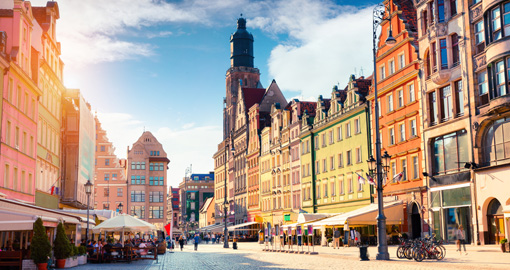
Wroclaw is Poland’s fourth largest city and one of the most attractive for Poland vacations. It is a rival to Krakow and Warsaw due to its charming ambience and magnificent architecture. The heart of the city is the market square, one of the largest in the country, totally rebuilt after WWI with some of the most beautiful medieval architecture in Poland. It is lined with colourful houses, cafes, bars and restaurants. The Old town of Wroclaw is a winding maze of cobblestone streets and church spires. The Gothic Town Hall dates back to the 13th Century and today is the home of the Museum of Bourgeois Art. Another pretty square is Salt Square, again lined with cafes, restaurants and boutique shops. Ostrow Tumski translates as Cathedral Island which is home to the Cathedral of St. John the Baptist. Other highlights here include the baroque Royal Palace completed in 1717, the Neon Side, a place with a collection of old neon signs from Wroclaw and turned into an exhibit, Centennial Hall which when built in 1913, was one of the largest of its kind in the world and Wroclaw Fountain which has 300 jets and 800 lights to create impressive water and light show.
Tatra Mountains
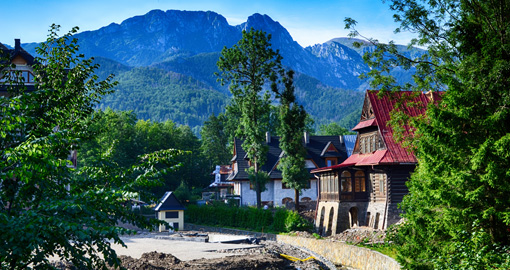
The Tatra Mountains form a natural border between Slovakia and Poland. They are the highest mountain range in the Carpathian Mountains with steep peaks, deep glens, and crystal lakes. They offer stunning views, skiing in winter, hiking, rock climbing, cave exploration, cycling, paragliding and more. The highest peak, called Gerlach is 2655 metres/8710 feet high. The main resort is Zakopane, the gateway to the Tatra Mountains and a major center for winter sports and in the summer, hiking.
Get a Trip Quote Order a Brochure

















